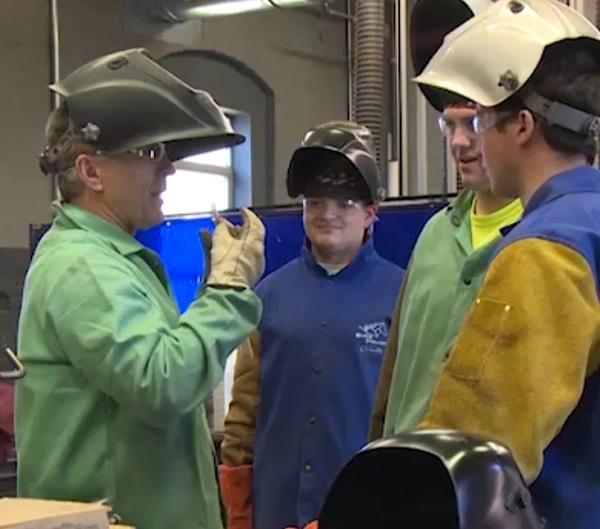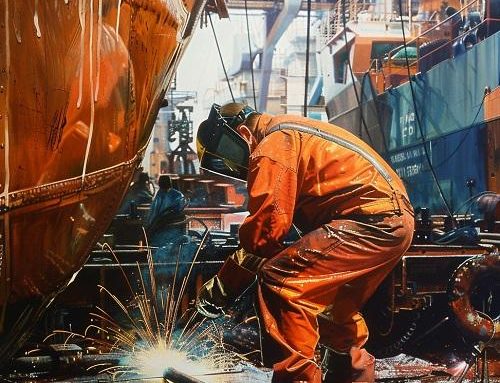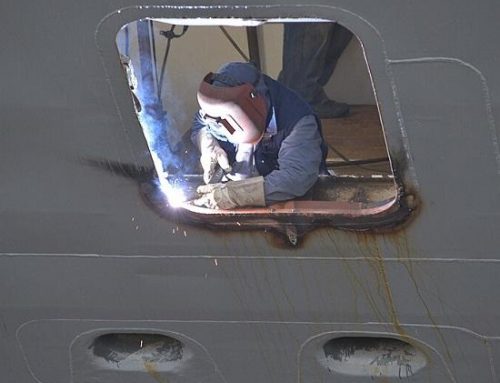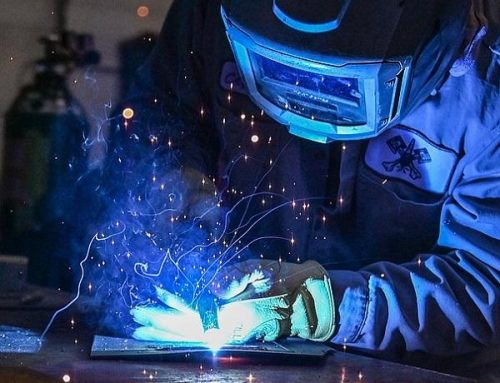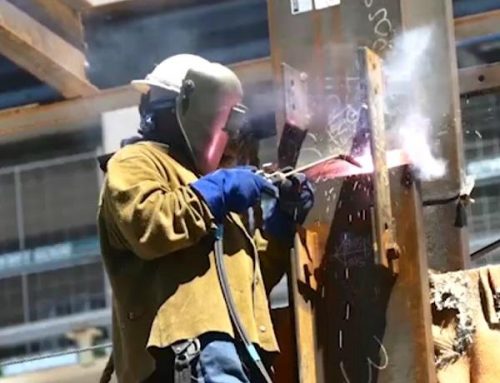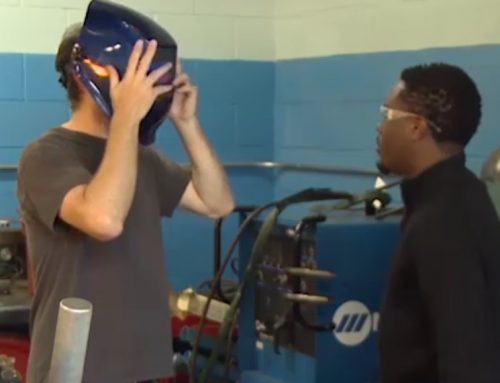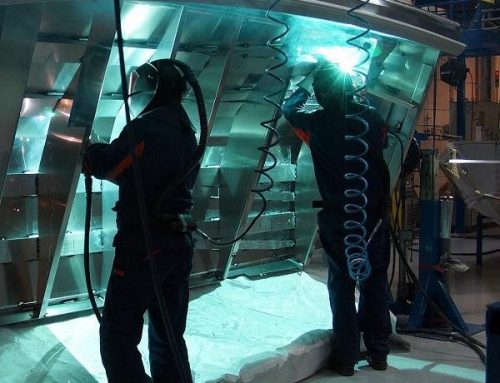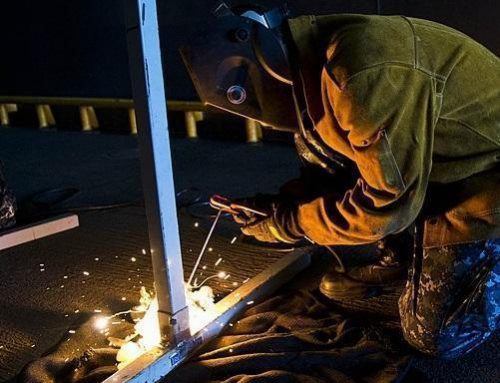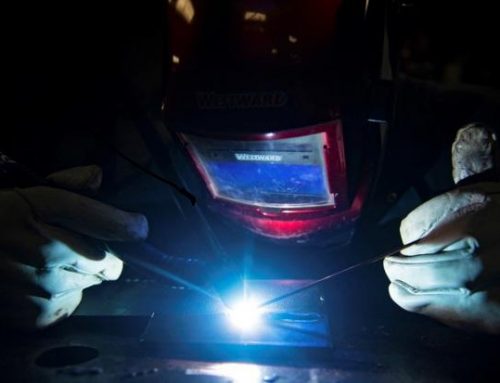Welding is an essential industrial process utilized in many fields to join and cut metals. However, welding also poses significant hazards that can result in severe injuries or even death if proper safety precautions are not followed. This article will provide a detailed overview of the major safety concerns involved with welding, cutting, brazing and soldering work, and how workers can protect themselves by implementing proper procedures, using protective equipment, and being vigilant about their surroundings. The information presented is based on an online occupational safety training course about welding hazards and prevention methods.
The Extreme Heat of Welding
The immense amounts of heat involved make welding an inherently dangerous activity. Common welding methods utilize extremely high temperatures to melt and join metals:
- Oxy-fuel welding can reach over 6,000°F. The combustion of oxygen and acetylene or other fuel gases generates this heat.
- Arc welding processes like MIG, TIG and stick welding produce temperatures exceeding 10,000°F through electrical arcs.
These severe temperatures pose a contact burn hazard. Welded metals remain hot long after the welding is completed. Workers must avoid contact with uncooled metals with insulated welding gloves. The high ambient heat in welding areas can also cause burns and heat stress illnesses.
The Dangers of Pressurized Fuel Gases
Oxy-fuel welding relies on the burning of pressurized oxygen with acetylene, hydrogen, natural gas or propane gas to generate a hot flame. The storage and handling of these compressed fuel gases creates explosion hazards:
- A gas leak or rupture in a pressurized gas cylinder can lead to a catastrophic explosion. Faulty welding equipment is often to blame.
- Fuel gases can rapidly ignite from sparks, static electricity or other ignition sources. Flashback explosions travel back into the torch or regulator equipment.
- Unconsumed fuel gas leaking into a confined space displaces breathable air and may reach explosive concentrations if allowed to accumulate. Proper ventilation is essential.
Workers must take care to prevent leaks in hoses and equipment. Cylinders should be capped and stored upright and secured. Flashback arrestors on torches prevent flashbacks from reaching cylinders. Gas supplies must be shut off when not in use.
The Threat of Electrocution and Electric Shock
Arc welding utilizes high amp electrical currents ranging from 80 to 600 amps. Stick welding and MIG welding involve electrode wires energized with up to 45 volts. TIG welding torches deliver up to 30 volts. This electrical power poses multiple hazards:
- Electric shock from contacting live electrode wire or other energized parts of welding equipment can result in severe burns or electrocution.
- Damaged wiring or poor connections can lead to stray arcing, which can burn the welder.
- Electrical arcs and sparks often ignite fires and explosions when combustible materials are nearby.
Electrical hazards are reduced by inspecting equipment for damage before use, keeping hands and body insulated from live parts, keeping cables dry, and ensuring adequate separation between welding cables.
The Dangers of Welding Radiation
The intense ultraviolet (UV) radiation from a welding arc poses a hazard to unprotected eyes and skin. The brightness requires proper eye protection to prevent temporary or permanent vision damage.
- UV radiation causes “arc eye” or “welder’s flash,” a painful condition where the cornea is inflamed. It feels like having sand in your eyes.
- Looking at the unfiltered UV light can permanently damage the retina. This can lead to vision problems or blindness.
- Over years of exposure, UV light can lead to cataracts in the lens of the eye.
- UV rays also damage the skin, resulting in sunburn-like burns or even skin cancer after repeated exposure.
Welding shields, helmets and goggles must have proper lens filtering to block hazardous visible and UV light emitted by various welding processes. Oxy-fuel welding requires shade number 3-6 filters, while arc welding needs shades 9-14. Proper gloves, clothing and screens should protect the skin as well. Coworkers nearby also require protection.
The Toxic Fumes and Gases Released
When Welding Heated metals and coatings like lead, cadmium, zinc and beryllium release dangerous fumes into the air during welding. The fumes contain microscopic particulate that can be inhaled deep into the lungs.
- Metal fume fever causes flu-like symptoms like fever, chills, nausea and muscle aches in the short term after exposure.
- Long term exposure to certain metal fumes can affect kidney function, cause respiratory illnesses like bronchitis or pneumonia, or lead to lung cancer, nerve damage or other debilitating health effects.
Proper ventilation must be implemented to control worker exposure to hazardous welding fumes. Natural or mechanical ventilation methods remove and dilute the contaminated air. Respirators may also be required in some situations.
Creating Designated Welding Areas
To control hazards, companies often create designated welding areas isolated from other workers. These locations have all flammable materials removed and fire prevention systems in place. Workers can weld in these areas without permits or taking additional precautions.
Setting up Fixed Welding Areas:
- Locate welding areas in isolated sections of the facility, away from flammable materials and workers not involved in the welding.
- Remove all combustibles from the welding zone and follow the 35 foot rule to keep flammables at least 35 feet away.
- Install fire sprinkler systems or other fire suppression equipment. Ensure adequate availability of fire extinguishers.
- Provide proper ventilation systems to remove toxic fumes and prevent accumulation of flammable gases.
- Use nonflammable screens and partitions to shield nearby workers from sparks and UV radiation.
Following Permit Procedures for Field Welding
When welding must be performed outside of designated welding areas, companies utilize a hot work permitting system. Permits ensure flammable materials are identified and protected before allowing welding in that location.
Obtaining a Hot Work Permit:
- The welder requests a permit from the supervisor or fire safety manager.
- The supervisor inspects the location for fire hazards and dictates any precautions needed to make the area safe for hot work.
- The supervisor completes the permit listing the location, duration, required precautions and atmospheric testing needed.
- All safety precautions are implemented before the permit is approved.
- The signed permit is posted at the site. It allows welding for the listed time period, usually no more than a single work shift.
Safeguarding Against Fires and Explosions
Sparks fly from weld sites and can ignite fires and explosions. Workers must remove or protect combustibles before welding under the 35 foot rule. Precautions include:
- Relocate combustible materials at least 35 feet away from the welding if possible. Further for materials easily ignited.
- Sweep floors clean of dusts and combustible litter which sparks can ignite.
- Cover flammable floors with fire resistant sheets, damp sand or other coverings.
- Protect flammable surfaces with welding pads, screens or metal guards.
- Use fire-resistant barriers like welding screens or blankets to block sparks. Avoid impeding ventilation flows.
- Keep a fire extinguisher within quick reach. Have a fire watch stand by during and after welding to quickly extinguish any small fires.
Special Care for Welding in Confined Spaces
Welding in limited-access spaces like tanks, vaults, and tunnels poses additional hazards. Toxic fumes can concentrate rapidly in the confined area. An arc can ignite flammable gases or residues. The heat and electricity make escape difficult.
Safe confined space procedures include:
- Test the atmosphere for adequate oxygen levels, explosive gases and toxic contaminants before entry.
- Use ventilation ducts and air blowers to maintain air quality by forcing fresh air into the space.
- Prevent Sparks from Igniting Fumes – Do not weld on surfaces coated in flammable residues. Keep flammables out.
- Use explosion-proof ventilation equipment and have rescue equipment and helpers standing by.
- Wear harnesses and Respiratory Protection lifelines to allow quick rescue if overcome by fumes or heat.
Selecting the Proper Respiratory Protection
When ventilation cannot control hazardous fumes, workers must use respirators approved for use against the specific contaminants released.
- Air-purifying respirators use removable filters to trap various particulates, gases and vapors.
- Cartridge respirators trap specific chemical contaminants. Appropriate cartridges are essential.
- Powered air-purifying respirators (PAPRs) blow filtered air into a facepiece. They provide more airflow and comfort in hot areas.
- Air-supplying respirators deliver clean air through a hose from a compressor or compressed air cylinders. Useful in confined spaces.
- Self-contained breathing apparatus (SCBA) allow movement by having a supply of compressed breathing air in a tank carried by the user.
All tight-fitting respirators like disposable masks require fit testing before initial use to confirm a good seal to the face for maximum protection.
Protecting Against Eye Hazards
- Welding helmets or hand-held face shields with proper filter lenses protect eyes from sparks, UV burns and vision damage. Lenses rated shade 9-14 are needed for arc welding.
- Use safety glasses or goggles under helmets for added spark protection.
- Wear head coverings under helmets to prevent burns. Flame-resistant bandanas or balaclavas work well.
- Position welding screens around the work area to shield others from eye hazards.
Donning Protective Clothing The proper clothing protects welders from heat, sparks and molten metal spatter during welding. Recommended attire includes:
- Flame-resistant cotton or leather jackets, aprons, sleeves and leggings to shield skin from radiant heat and direct spatter impact.
- High-top leather work boots laced and tied to prevent spatter entry.
- Long-sleeved shirts and full-length pants without cuffs to protect arms and legs.
- Leather welding gloves extending past wrists. Replace routinely when damaged or worn.
- Safety glasses or goggles for all-around eye protection from debris or flying particles.
- Earplugs and ear muffs to prevent hearing damage from loud noise. Protect ears from spatter entry.
Fall Protection and Other Safe Work Practices
- Utilize fall arrest systems when welding at heights. Platforms should have standard guardrails installed.
- Keep electrode holders and torches in good repair. Cables should be free of cuts or fraying.
- Follow safe handling procedures for high pressure gas cylinders.
- Keep appropriate fire extinguishers available in the work area.
- Allow sufficient cooling of hot metals and tools before handling directly.
Summary
Welding and cutting operations pose many workplace hazards, yet safe work practices can effectively control the risks. Workers should familiarize themselves with the specific hazards involved in their welding processes and procedures. Employers must create designated welding areas when possible, and implement hot work permitting procedures when welding must be performed outside established welding zones. Diligence in following safe work policies and consistently utilizing protective equipment helps prevent injuries when this essential industrial work is being performed.
To further enhance safety in welding operations and equip your team with essential knowledge for handling these high-risk tasks, our “Welding Safety” online training course provides a detailed curriculum. This course is specifically designed to educate workers on the hazards of welding and the best practices for minimizing risks, making it a vital tool for ensuring safety in welding environments.
Elevate the safety standards of your welding operations with Our “Welding Safety” online training course. Tailored for the over half a million U.S. workers performing welding, cutting, brazing, and soldering daily, this course is a critical tool in reducing the significant risks of fatal and non-fatal injuries associated with these tasks.
Comprehensive Training for Welding Safety
Welding tasks are inherently risky, often leading to severe injuries, workplace damage, and fatalities. Our course is designed to change this reality by educating your team on the hazards of welding and equipping them with the knowledge of safe practices and the right equipment to use.
Detailed Coverage of Vital Safety Topics
Our course comprehensively covers a range of crucial welding safety aspects:
- Understanding the potential hazards of welding.
- Guidelines for working in designated areas, handling work permits, and navigating confined spaces.
- Effective strategies for preventing fires while welding.
- Protocols for protecting against toxic fumes.
- The use of appropriate safety gear like goggles, helmets, and hand shields.
- Choosing and using the right gloves, clothing, and other protective equipment.
Micro-Learning for Effective Skill Building
Recognizing the demanding nature of welding work, Our course adopts a Micro-Learning format. These concise 3-5 minute modules are designed to fit into tight schedules, ensuring that workers can learn essential safety information without hindering productivity.
Accessible Training for a Diverse Workforce
Our commitment to inclusive learning means offering the course materials in both English and Spanish. This ensures that every member of your diverse team has equal access to this crucial safety training.
A Range of Learning Resources
In addition to our online training, we provide DVDs and interactive CD courses to cater to various learning styles. This comprehensive approach ensures a deeper understanding and application of welding safety practices.
Your Partner in Welding Safety
Opting for Our “Welding Safety” course means taking a significant step toward creating a safer, more informed environment for welding operations. We are dedicated to helping you minimize risks and protect your employees from welding-related hazards.
For a detailed course outline and to experience a demo of Our Online Training System, click below. Let’s work together to make welding safety a priority in your workplace!


